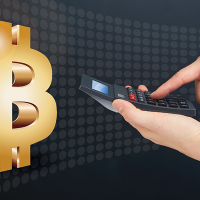Watch Your Wallet

A bitcoin wallet is software that connects you to the bitcoin network. This is the first step in acquiring bitcoin. You know how it is when you send someone an email. You have to have an email address, a password, and a way of connecting to the network. It can be webmail or a program such as Thunderbird or Outlook.
You open up your email program and send an email to someone, using the email address that they gave you. The email is sent using your email address. If someone gets your password, they can log into your email account and send out messages pretending they are you.
With bitcoin, you also need software to connect to the network. Your wallet is the software that allows you to connect to the bitcoin network. You have a public key and a private key instead of an email address and a password. You have to protect your private key because if anyone gets access to your wallet, they can clean it out. Think of it as leaving a tangible wallet stuffed with cash out where anyone can pick it up and empty it.

You can have a hot wallet or a cold wallet. A hot wallet is connected to the internet. It can be sitting on your computer, tablet, or phone. A cold wallet is kept offline. It gives a whole new meaning to cold storage. All it means is that it cannot be accessed on the internet.
Your wallet is a node on the bitcoin network. It can be a full node or a lightweight node. A full node loads every bitcoin transaction to your wallet. At bitcoin.org, the latest bitcoin core information is available. This is the entire history of all bitcoin transactions to date. As of November 2017, it is big – 145 gigabytes. Some people have reported that it took several days to download the full node. It also takes up a lot of space on your computer. It would not fit on a phone.
A lightweight node is also referred to as an SPV wallet or node. SPV stands for simplified payment verification. In this mode, you download only a part of the bitcoin core. It is still connected to the full node but it receives just the transactions that are necessary and that are relevant to your node.
You can also have an online wallet, a wallet in the cloud. Often bitcoin exchanges, those places where you can set up an account and buy or sell bitcoins, have wallets where you can store your bitcoins as you accumulate them. When you buy bitcoin on an exchange, you may want to leave some bitcoin cash in the wallet on the exchange and transfer some to another one of your wallets.
Paper wallets are also popular. You can print out your public and private keys and a QR code and store that piece of paper as if it were cash. With the QR code, it is easy to scan in and use online. The security depends on how well you store this valuable piece of paper.
If you have several wallets, it is easy to transfer your bitcoin from one to the other. Some users keep a lightweight wallet on their phone for easy and quick transactions. Typically, they keep it like pocket change, keeping just enough to have walking around funds.
They may keep some in a hot wallet on their home computer as well. They store the majority of their bitcoins in a cold wallet. When it comes to a cold wallet, it is possible to store your wallet on a USB stick. If you have a lot of bitcoin, you might want to consider a hardware wallet that encrypts the information. If someone gets your USB stick, it is possible that they can take your bitcoins. With a secure encrypted hardware cold wallet, that is not so easy.




